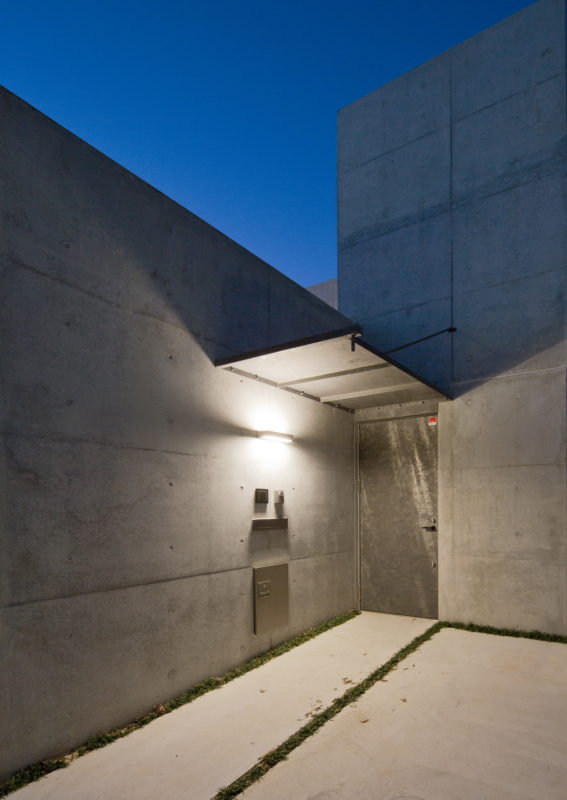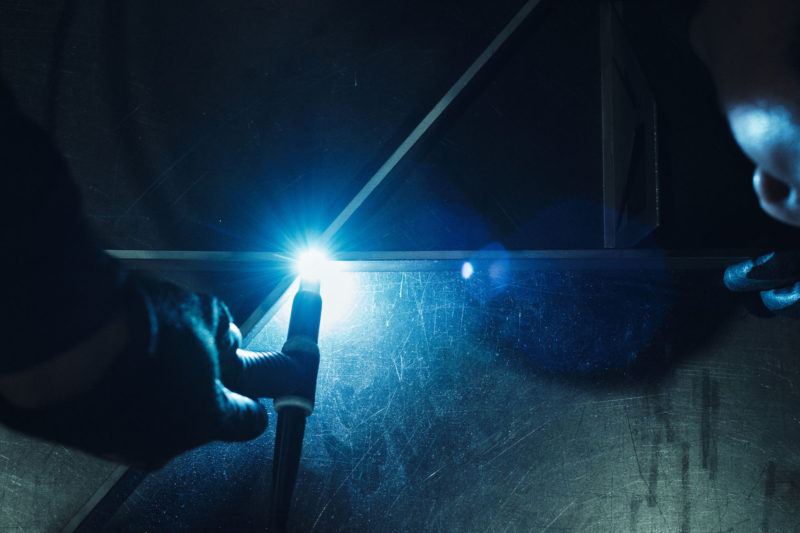愛知県名古屋市
コンクリート住宅

金属が主張する住宅の場合は全体の印象づくりを理解する必要があります。素材感が重要なのか、存在感が重要なのか、意匠と生活の双方がどのように融合していくのかを理解しなければなりません。重厚感よりもモダンさを重視した今回の案件においては、アイチ金属の通常の仕上げに加えて、全体の塗装印象の向上にも意識を配っています。 弊社における施工サイドとのやりとりは、提案の数を多くこなします。設計側の意向を汲み取りながらサンプルを提案して、認識をすり合わせていきます。どんなに少なくとも1~2回はこのやりとりをしながら、一つずつの素材や質感、表面処理のパターンなど、確認していく項目は多岐にわたります。もちろんサンプル代をいただくケースが多いですが、自社にとって挑戦すべき項目だと理解しているものは率先してテストを行います。機会を逃すことはしたくないのです。
存在感について
今回採用されたのは、住宅全体を印象付けるコンクリートとの相性からステンレスでした。ステンレスの表面処理にはエッチング、ヘアライン、梨地などさまざまあります。特に弊社では、ステンレスのカラーリングや薬液処理などの研究開発にも注力しています。現在では、大手鋼材メーカーを定年退職された技術者をアドバイザーに迎え、学術的な観点からの加工処理を研究している真っ最中です。 今回のステンレスには、ヘアライン加工がされており、階段やエントランス部分に流れを生み出しています。ステンレスのヘアライン加工は、上品でありながらもモダンな印象を生み出す技術だと思っております。特に、家屋に使うことで、人の動きを誘導するような印象を与える部分ではとても相性がいい加工だと感じています。
表現力について。
金属にはまだまだ無数の表現力があります。しかし、建築で使用される金属は、金属分野全体からみればごくわずかです。たとえばハイニッケル鋼のような金属は、半導体やエネルギー分野で扱われていたり、先端産業ではごく日常的に用いられ無数に種類がありますが、大変高価なためある程度のボリュームを必要する建築分野で使われることはほとんどありません。高度な切削技術がなければ全く太刀打ちできない素材でもあるため、より縁遠くなります。 こうした素材は、金属には無数にあります。それこそ、数えられるものではありません。さらに、日夜さまざまな研究機関で新しい金属素材の開発が行われています。そこには、金属加工における叡智が詰まっています。金属以外の分野の技術に関しても同様です。すべてにアンテナを張り巡らせながら、そのすべての中から何が私たちの分野の新しい発想や技術になるのか、それを考えるのがアイチ金属のミッションの一つです。技術に対する新しい発想は、必ず新しい意匠やデザインを生み出すことに通じていくと思っています。




